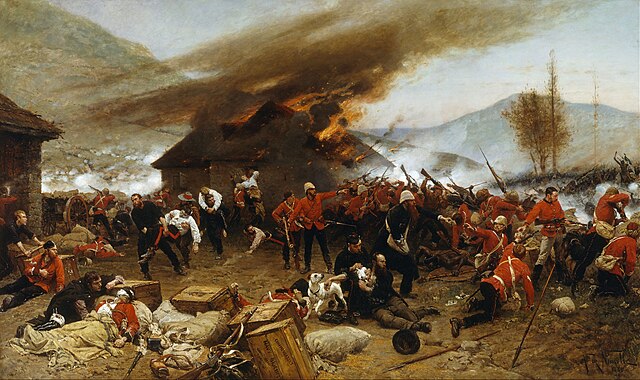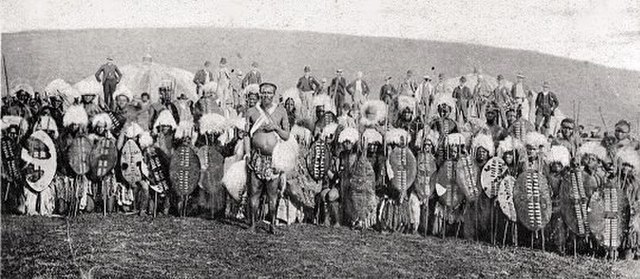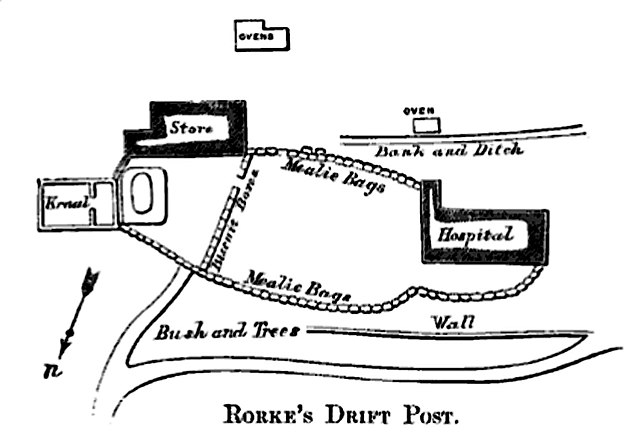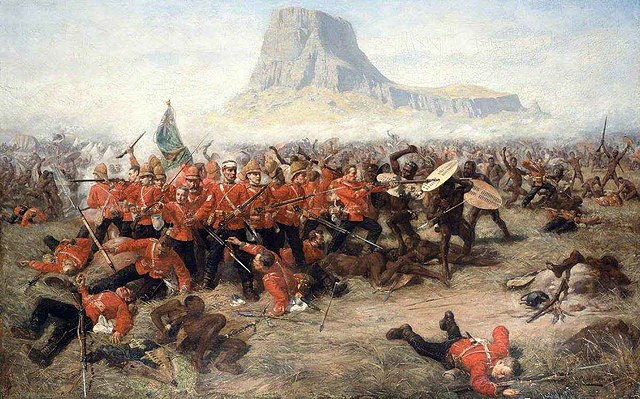The Battle of Rorke's Drift, also known as the Defence of Rorke's Drift, was an engagement in the Anglo-Zulu War. The successful British defence of the mission station of Rorke's Drift, under the command of Lieutenants John Chard of the Royal Engineers and Gonville Bromhead, of the 24th Regiment of Foot began once a large contingent of Zulu warriors broke off from the main force during the final hour of the British defeat at the day-long Battle of Isandlwana on 22 January 1879, diverting 6 miles (9.7 km) to attack Rorke's Drift later that day and continuing into the following day.
The Defence of Rorke's Drift, by Alphonse de Neuville (1880)
Prince Dabulamanzi kaMpande
Historical picture of Zulu warriors from about the same time as the events at Rorke's Drift
Contemporary drawing of Rorke's Drift Post, from The History of the Corps of Royal Engineers.
The Anglo-Zulu War was fought in 1879 between the British Empire and the Zulu Kingdom. The most famous battle of the War was the Defense of Rorke's Drift.
Following the passing of the British North America Act of 1867 forming a federation in Canada, Lord Carnarvon thought that a similar political effort, coupled with military campaigns, might lead to a ruling white minority over a black majority, which would provide a large pool of cheap labour for the British sugar plantations and mines, encompassing the African Kingdoms, tribal areas and Boer republics into South Africa. In 1874, Sir Bartle Frere was sent to South Africa as High Commissioner for the British Empire to effect such plans. Among the obstacles were the armed independent states of the South African Republic and the Kingdom of Zululand.
Bartle Frere
Photograph of Cetshwayo kaMpande, c. 1875
Hicks Beach
The Last Stand at Isandlwana, painting by Charles Edwin Fripp (1854–1906)








